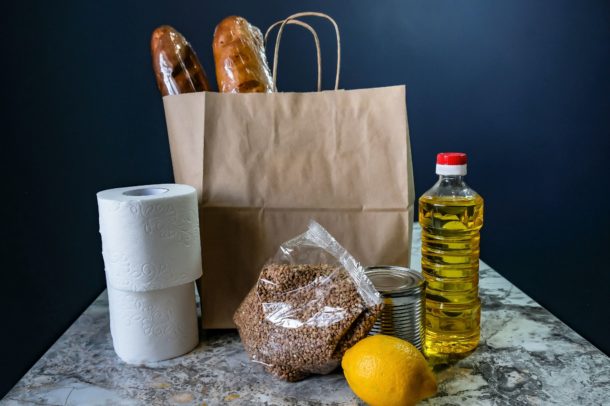In Canada, over a million people are regularly using food banks every month, and the need is expected to rise because of the COVID-19 pandemic. About 3 million people have lost their jobs in Canada in the past two months and millions more have seen their hours significantly reduced. Canada’s unemployment rates are reaching unprecedented highs. At the same time, the impact of the pandemic on food bank operations is creating new challenges. Increasing demands, physical distancing requirements, and decreasing food donations of as much as a 50%, are making it hard for them to cope. Yet, food banks are finding innovative ways to meet the needs, and are adjusting procedures to ensure the safety of clients, employees and volunteers.
Everyone is adapting to the havoc the virus is creating in our daily lives and routines. Many Canadians will find themselves needing the support of a food bank for the first time. This can be difficult for anyone, but even more so for those who must follow a kidney diet.
When you use a food bank, you may not be able to make the perfect food choices for a renal diet. In some cases, you may have no choice at all since many food banks can only provide pre-packaged hampers. To make the best of the choices available, keep these suggestions in mind if you find yourself turning to a food bank for help:
- Contact your food bank and ask if they can accommodate your special dietary requirements.
- When using canned goods, aim for those with less than 10% daily value of sodium, or rinse them well before eating.
- Avoid foods with phosphate additives. Suspect processed and powdered products. Read the ingredients list and avoid products containing “phosphate”, “phosphoric” or “phos” in the list.
- After visiting the food bank, plan your meals and snacks to ensure you eat well and save money.
- Prepare food in batches and use leftovers for a meal the following day or freeze for a day when your energy is low.
- Only cook vegetables you will need and add leftovers to soups or casseroles.
- Use leftover meat or chicken bones to make soup.
- Grow your own herbs such as rosemary and thyme to add flavour to your food or, if you have space, grow your own vegetables, such as lettuce, cucumbers and zucchini. Community gardens have been declared an essential service in many towns and cities.
- If you can, choose lower potassium fruits and vegetables such as apples, berries, pineapple, broccoli, cauliflower and corn.
- Talk to your dialysis unit social worker or dietitian for other resources that might be available in your community.
- The Kidney Foundation offers Short Term Financial Assistance for last resort financial assistance, on a short-term basis. Talk to your renal social worker about how to apply.
For more information about how to navigate a food bank on a kidney diet, read our Fact Sheet here.
